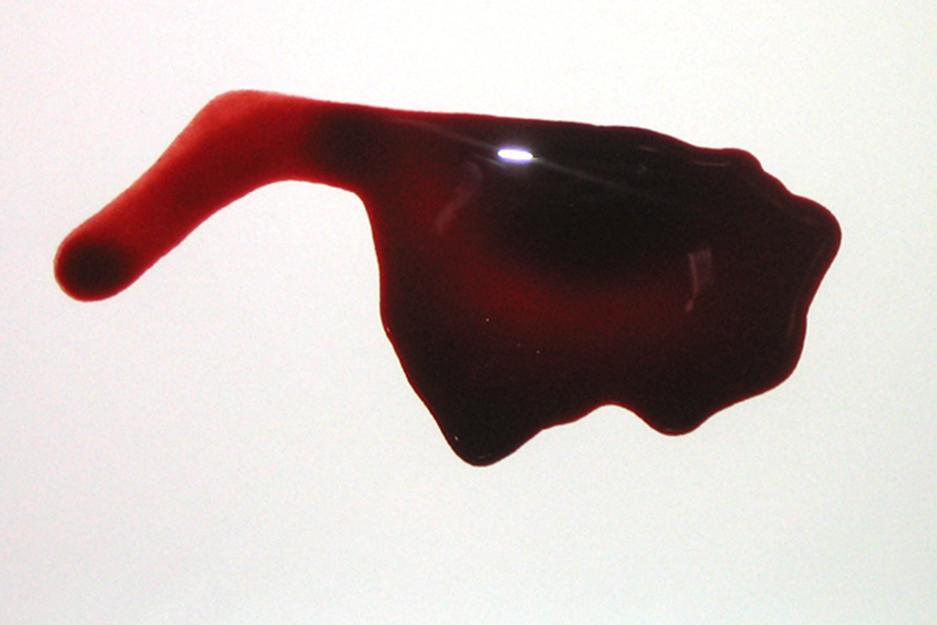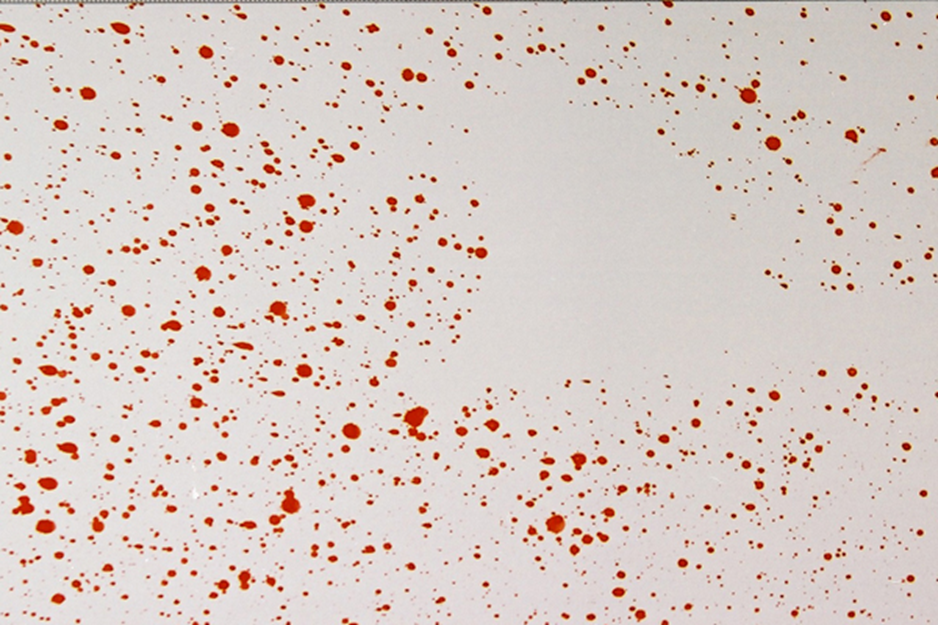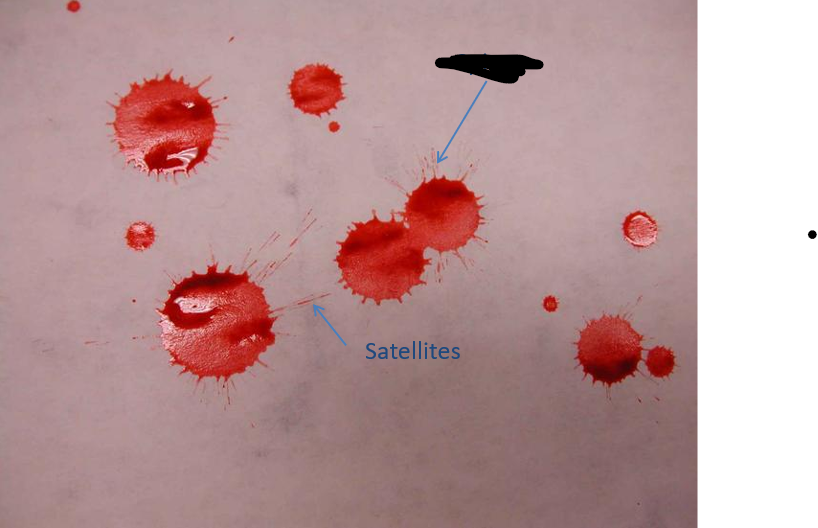4 Blood Pattern Analysis
1/33
There's no tags or description
Looks like no tags are added yet.
Name | Mastery | Learn | Test | Matching | Spaced |
|---|
No study sessions yet.
34 Terms
Blood pattern analysis
The examination, identification and interpretation of bloodstains in relation to the actions that caused them
Spatter
A bloodstain resulting from a blood drop dispersed through the air due to an external force applied to a source of liquid blood
Impact spatter
bloodstain patterns created when a blood source receives a blow or force resulting in the random dispersion of smaller drops of blood
Cast off
blood release or throw from a bloody object
Arterial damage
blood pattern resulting from blood exiting the body under pressure from a breached artery
what kind of spatter? blunt force, gunshot, exhalation, splash
impact
what kind of spatter? drip, swing, cessation
cast off
what kind of spatter? gush, spurt, rain
arterial damage
3 types of non-spatter
transfer, physiologically altered bloodstains (PABS), volume
Pool

A bloodstain resulting from an accumulation of liquid blood on a surface
Void

An absence of blood in an otherwise continuous bloodstain (pattern)
Satellite stain
A smaller bloodstain that originated during the formation of the parent stain as a result of blood impacting a surface
Perimeter stain
An altered stain that consists of the peripheral characteristics of the original stain, which partially dried and then was wiped
which is the most common blood pattern?
impact spatter
How does cast-off happen?
Centrifugal force causes wet blood to pool at one end of the weapon. When momentum overcomes surface tension, the blood will be cast off from the surface
What’s the general/common appearance of a cast off pattern?
linear, the volume of the drops and their angle changes as the weapon goes through its motion
Cessation cast off pattern
A bloodstain pattern resulting from blood drops released from an object due to its coming to an abrupt halt
Drip pattern
A bloodstain pattern resulting from a liquid that dripped into another liquid, at least one of them being blood
what stains does the drip pattern create by definition?
satellite stains
Drip stain
a bloodstain resulting from a falling drop that formed due to gravity
Projected pattern
A bloodstain pattern resulting from the ejection of a volume of blood under pressure
Bubble ring
An outline within a bloodstain resulting from air in the blood
Expiration pattern
A bloodstain pattern resulting from blood forced by airflow out of the nose, mouth, or a wound
Flow pattern
A bloodstain pattern resulting from the movement of a volume of blood on a surface due to gravity or movement of the target
Swipe pattern
A bloodstain pattern resulting from the transfer of blood from a blood-bearing surface onto another surface, with characteristics that indicate relative motion between the two surfaces
Wipe pattern
An altered bloodstain pattern resulting from an object moving through a pre-existing wet bloodstain
Transfer stain
A bloodstain resulting from contact between a blood-bearing surface and another surface

what is this pattern called? why does it happen?
it’s spines, it happens because of surface texture
Saturation stain
A bloodstain resulting from the accumulation of liquid blood in an absorbent material
what are some physical factors to consider during BPA?
gravity, viscosity, surface tension, velocity